How Often Do Bearded Dragons Eat? TopFlight Dubia Answers
May 7th 2025
|
Quick Look:
1. Hatchlings: 2-3 times a day. 2. Juveniles: 2 times a day. 3. Adults: Once a day. |
If you are a beginner bearded dragon owner, you might be wondering how often you should feed your new pet.
When feeding your bearded dragon, it is essential to provide the right amount of food, as the weight of bearded dragons differs by age and their nutrient intake. However, it may seem straightforward, but understanding the frequency and type of food to offer can be a bit tricky, especially for first-time owners.
So, here in this guide, the experts at TopFlight Dubia will break down everything you need to know about feeding your bearded dragon. By the time you finish reading, you will know the best food for bearded dragons and how often to feed them.
What Do Bearded Dragons Eat?
In this section, we will cover the best insects, veggies, and fruits to include in their diet as well as what to avoid or limit.
What Insects Can a Bearded Dragon Eat?
Best Staple Insects
|
Best Staple Insects |
Image |
Key Benefits |
|
Dubia Roaches |
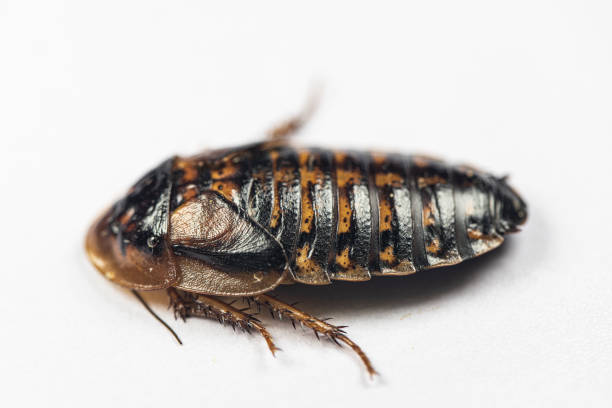 |
Nutritional value (higher in protein and calcium and lower in chitin), which makes them easier for dragons to digest. |
|
Crickets |
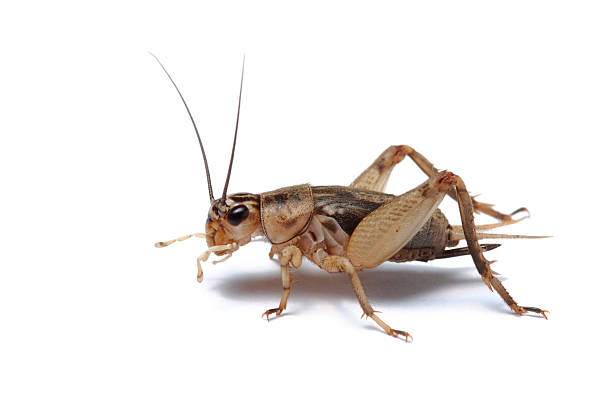 |
Crickets are high in protein and calcium, which play an important role in the diet of any reptile. |
Are Dubia Roaches Better than Crickets for Bearded Dragons?
Yes, Dubia roaches are better than crickets because they have less chitin as compared to crickets, which makes them easier for dragons to digest. So, choose fresh and live Dubia roaches from a trusted online supplier for Dubia roaches to ensure you are getting the best nutritious food for your pet.
|
What is Chitin? Chitin is a protein that is present in the exoskeleton of feeder insects. Typically, this protein will increase as the insect ages. So, in crickets, this tends to be higher in amount, which makes it difficult for dragons to digest. However, many bearded dragons do love to eat crickets in limited amounts. |
Insects Best Left as Treats for Bearded Dragons
|
Insects That are Best as Treats |
Image |
Key Benefits |
|
Hornworms |
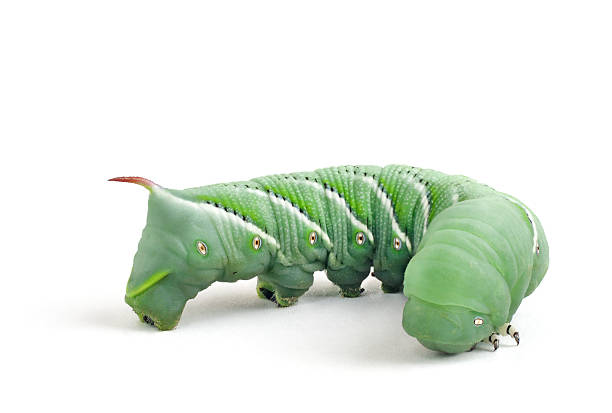 |
High moisture content. |
|
Silkworms |
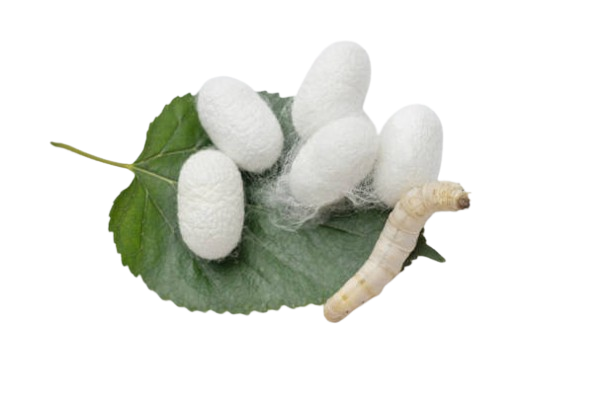 |
High in calcium and low in fat. |
|
Mealworms |
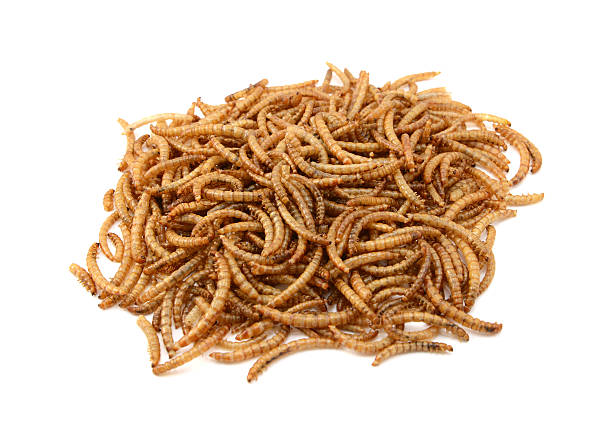 |
Common and cost-effective. |
|
Superworms |
 |
High protein and great for encouraging feeding. |
|
Waxworms |
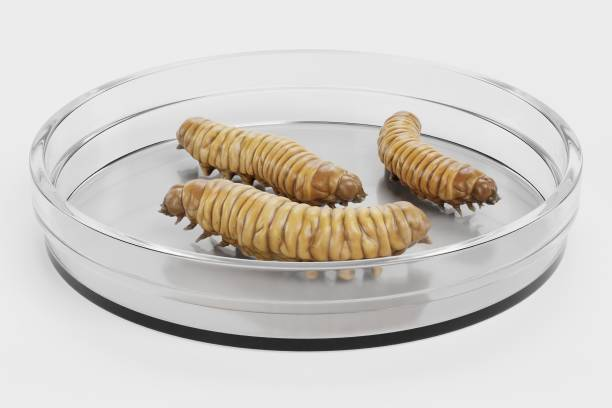 |
Energy boosting and tasty. |
|
NOTE: These insects make excellent treats, but they should be offered in moderation due to their high fat content. |
Where Should You Store Their Food?
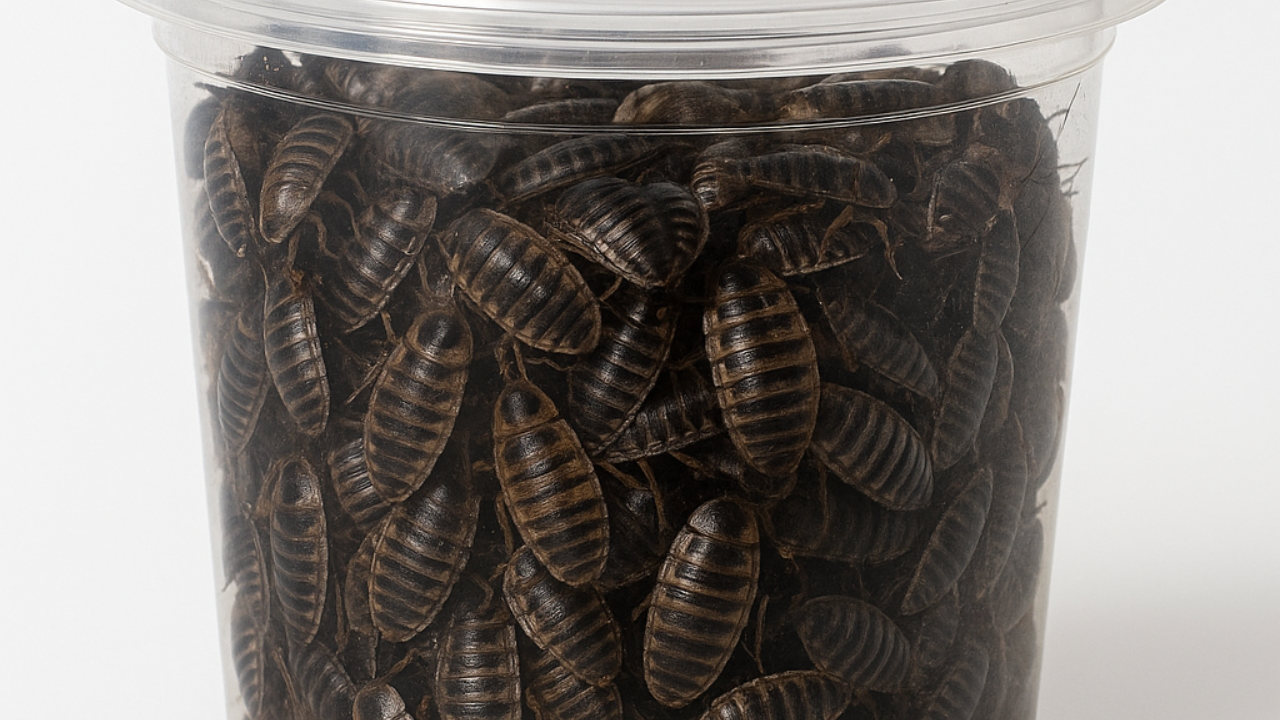
Bearded dragons’ food should be stored properly to maintain freshness and prevent spoilage. Store live feeder insects in ventilated enclosures with proper temperature and humidity.
What Veggies Do Bearded Dragons Eat?
Bearded dragons can and should eat vegetables as part of their diet to get the essential vitamins, minerals, fibers, and for hydration. Here are some of the best greens for beardies:
|
Vegetables for Bearded Dragons |
Image |
Benefits |
Beneficial for |
|
Dandelion Greens (Daily) |
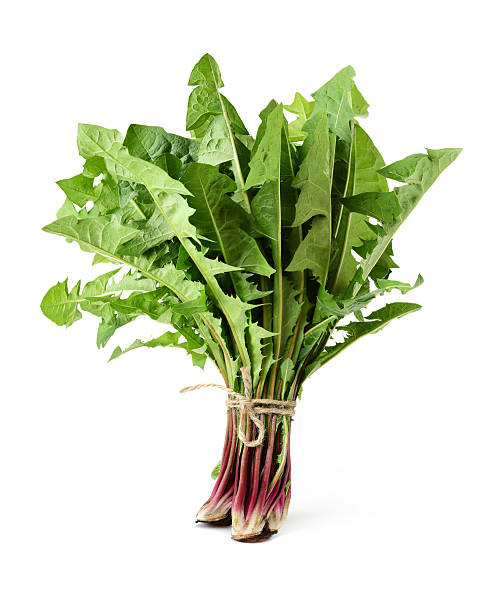 |
Rich in calcium, vitamin A, and fiber. |
Bone health and digestive function. |
|
Collard Greens (Daily) |
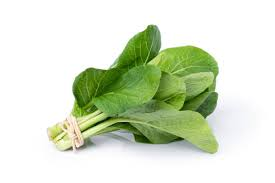 |
High in calcium, vitamin A, and vitamin K. |
Strong bones and overall health. |
|
Turnip Greens (Daily) |
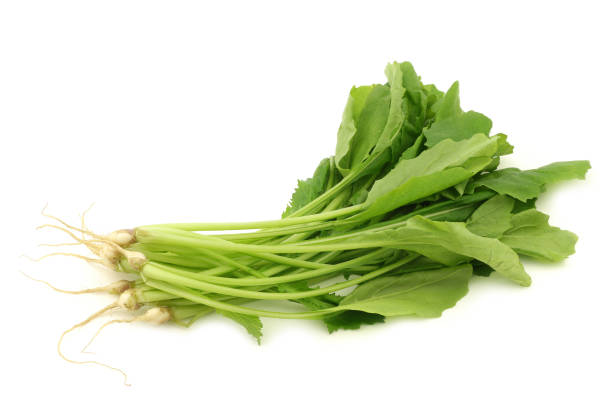 |
Provide calcium, vitamin A, and vitamin K. |
Bone development and a strong immune system. |
|
Kale (Occasionally) |
 |
Contains calcium, vitamin A, and vitamin K. |
Bone health and immune function. |
|
Arugula (Occasionally) |
 |
Calcium, vitamin A, and fiber. |
Bone health and the digestive system. |
|
Squash (butternut, yellow, acorn, spaghetti, hubbard, or scallop) ( Feeding frequency depends on the type of squash) |
 |
High in fiber, vitamin A, and water content. |
Digestion and hydration. |
|
Zucchuni (Occasionally) |
 |
Provides water, vitamin C, and fiber. |
Hydration and digestive health. |
|
Cactus Pads (Daily) |
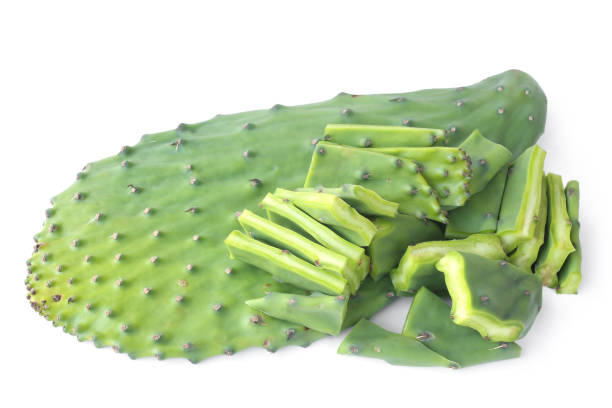 |
Offers calcium, water, and vitamins A, B6, and C. |
Bone health and hydration. |
|
Endive (Daily) |
 |
Contains calcium, vitamin A, and vitamin K. |
Bone health and overall well-being. |
Bearded dragons can safely enjoy a variety of other vegetables, like carrots, peas, green beans, bell peppers, sweet potatoes, and okra. It is essential to incorporate these vegetables into a balanced diet in moderation.
|
NOTE: Canned vegetables should be avoided for bearded dragons due to added salts, preservatives, and sugars. So, fresh or frozen vegetables are always a better, healthier choice for your pet. |
What Fruits Do Bearded Dragons Eat?
Fruits are a tasty treat for your pet, but they should make up a small portion of their diet due to their high sugar content. Here are some of the fruits that you can feed to your pet sparingly.
|
Fruit |
Image |
Notes |
|
Apple (Without Seeds) (Once a Week) |
 |
Remove seeds; peel skin if necessary. |
|
Papaya (Once a Week) |
 |
High in vitamin C. Feed in moderation. |
|
Mango (Once or Twice a Week) |
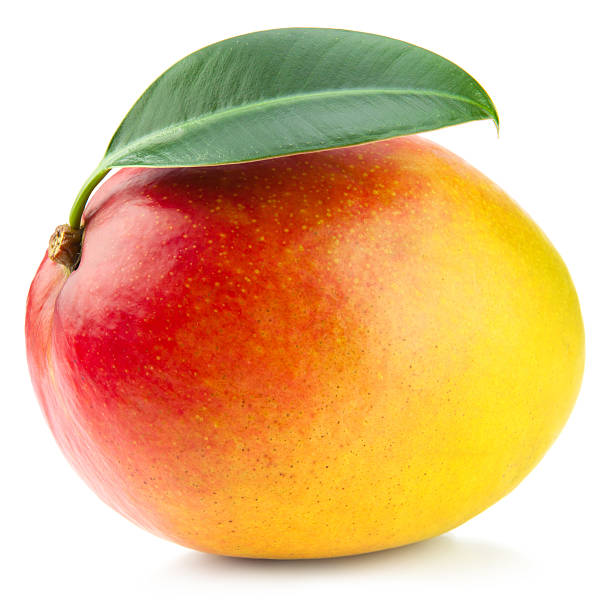 |
Rich in vitamins. Ensure it is ripe and peeled. |
|
Watermelon (Once a Week) |
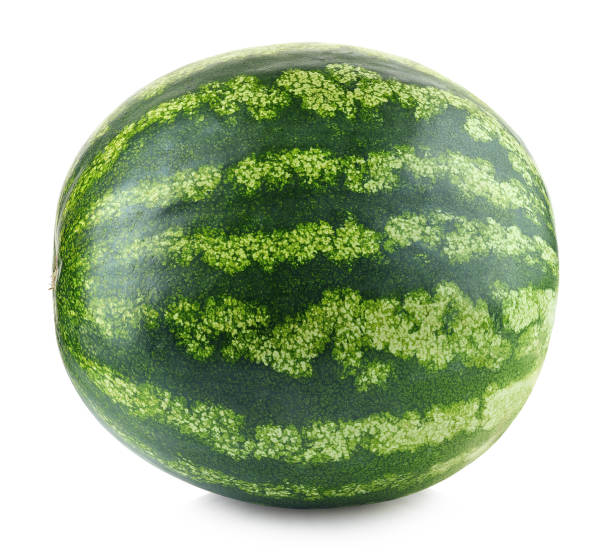 |
Hydrating. Remove seeds and rind. |
|
Cantaloupe (Once or Twice a Week) |
 |
High in water content. Remove seeds. |
|
Blueberries (Few Berries a Week) |
 |
Antioxidant-rich. Feed in small amounts. |
|
Grapes (Once a Week) |
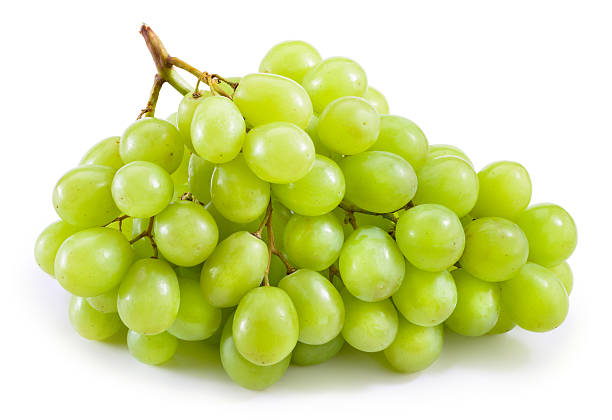 |
High in sugar. Feed sparingly and remove seeds. |
|
Strawberries (One to Three Times a Week) |
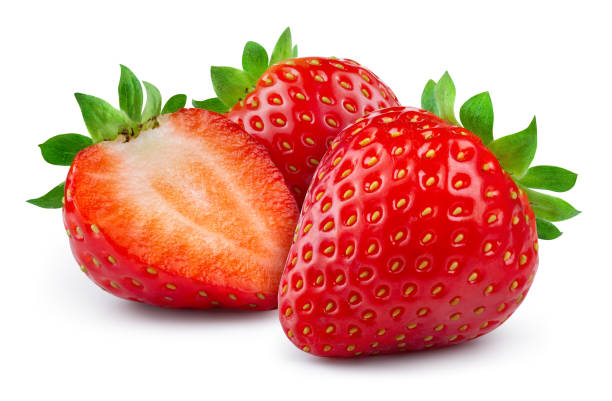 |
Rich in vitamin C. Feed in moderation. |
|
Feeding Tip: Always peel the skin, remove seeds, and cut the fruit into small, manageable pieces to prevent choking hazards. |
What Foods Should Bearded Dragons Limit or Avoid?
Wild-Caught Insects

Avoid wild-caught insects like mosquitoes as they can carry parasites, diseases, or pesticides, making them unsafe to feed.
Vegetables
1. Iceberg Lettuce

This has very low nutritional value and can cause digestive problems.
|
NOTE: However, lettuce can be given to bearded dragons occasionally as a source of water. |
2. Spinach, Broccoli, and Kale

These veggies contain oxalates that can bind to calcium and interfere with its absorption. Thus, it can lead to calcium deficiency. If your bearded dragon loves to eat this kind of vegetable, then consider offering them as a rare treat.
3. Parts of Leafy Greens

Some inner light color parts of vegetables can be less nutritious than the darker green outer leaves because they are less exposed to sunlight as compared to the darker ones.
4. Onions, Chives, Mushrooms, Garlic, Rhubarb, and Eggplants

These are generally not recommended for bearded dragons due to the potential toxicity, digestive difficulties, or nutrient imbalance they can cause.
5. Tomatoes and Peppers (in High Quantities)
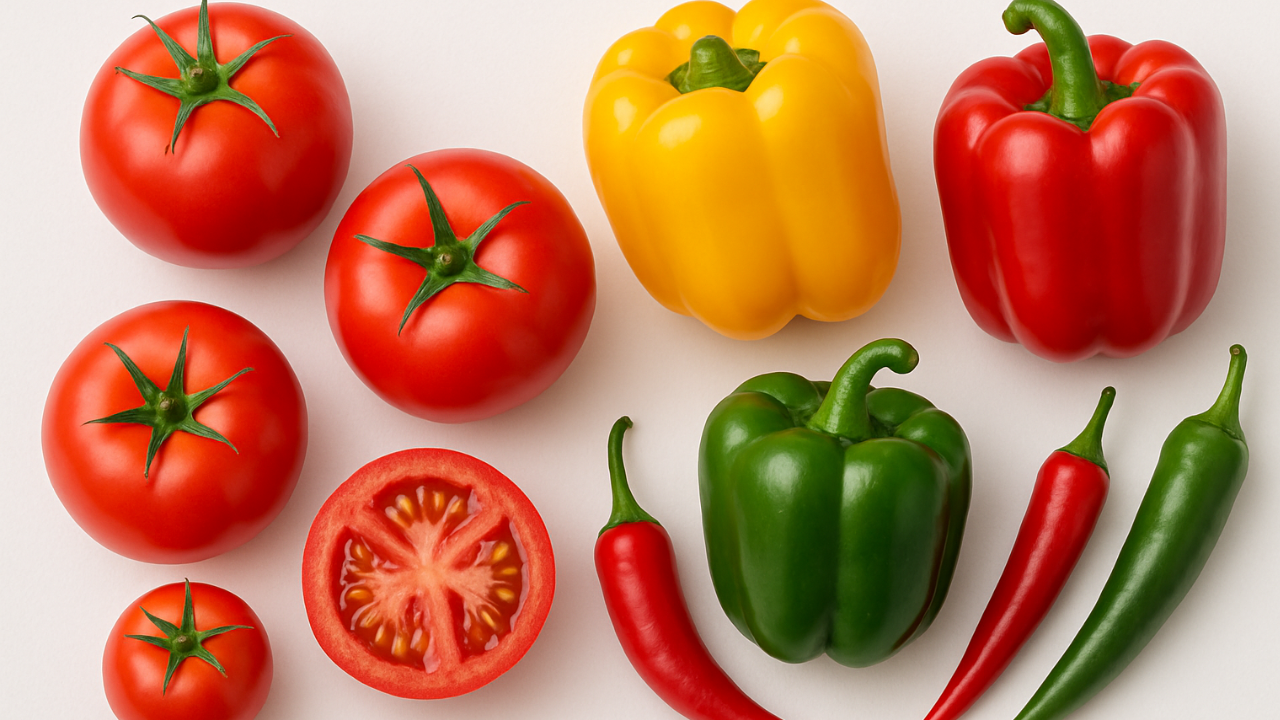
Tomatoes and peppers in high amounts may cause digestive upset in bearded dragons. So they are fed in limited amounts.
6. Beet Tops

Beet tops are another calcium binder, which can cause calcium deficiency.
Fruits
1. Citrus Fruits

Citrus fruits like oranges are highly acidic in nature. These fruits can harm your bearded dragons by causing gastrointestinal issues and even disrupting their nutrient absorption.
2. Avocado

Bearded dragons cannot eat avocados because they contain persin, a fungicidal toxin that can cause gastrointestinal issues and even respiratory distress in bearded dragons.
3. Bananas

Bearded dragons can eat bananas occasionally as a rare treat due to the high phosphorus content, which can interfere with calcium absorption.
4. Seeds and Pits

Seeds like pumpkin seeds should be avoided as they can choke your bearded dragon. Similarly, fruits with large seeds and pits should be removed first before offering the fruit in small pieces to your bearded dragons. This is important as the pits and seeds may pose a choking or impaction hazard.
How Often Should Bearded Dragons Eat?

Many first-time bearded dragon owners might have this question in their minds:
“How many times a day do bearded dragons eat?”
The feeding schedule of bearded dragons varies depending on their age and life stage. Here we will dive into how much a bearded dragon should eat as per their age:
Feeding Frequency by Age
1. Hatchlings to ~4 Months Old

- Feeding Per Day: 2-3 times a day.
- Diet: Baby bearded dragons need a high-protein diet. So, feed them live insects like Dubia roaches, about 10-20 head-sized items per feeding. They should also be offered leafy greens like collard greens and dandelion greens daily.
- Insects to Green Ratio: Approximately 80-90% insects and 10-20% greens.
2. Juvenile Bearded Dragons (~4 to 12-18 Months)

- Feeding Per Day: 2 times a day.
- Diet: The 4-month-old bearded dragons still need insects, but can also start increasing their intake of vegetables. As per a Reddit query, a user suggested feeding insects like Dubia roaches to a 2-year-old bearded dragon with insects (Dubia roaches) approximately 2 to 3 times per week, with 10 insects per feeding. Give your pet staple veggies like Dandelion greens and many more.
- Insects to Greens Ratio: About 60-70% insects and 30-40% greens.
|
TIP: When you are feeding juvenile bearded dragons, it is important to ensure they get the most out of their food without getting bored. So, alternate between two or more insect species and three or more salad items. |
3. Sub-Adults (Over 12-18 Months)

- Feeding Per Day: Greens should be fed daily, and insects occasionally per week.
- Diet: The diet of bearded dragons changes as they age. Give your pet Insects 3-4 times a week. You can also include greens and some fruits in moderation.
- Insects to Greens Ratio: 25-30% insects and 70-75% greens.
4. Adult Bearded Dragons ( Over 18 Months)
- Feeding Per Day: Once a day.
- Diet: Give your pet approximately 8 to 10 Dubia roaches 2-3 times a week and staple greens daily.
- Insects to Greens Ratio: Approximately 20-30% insects and 70-80% greens.
Additional Tips:
- Calcium and Vitamins: Continue dusting insects with calcium powder 2-3 times a week. Vitamin D3 can be added occasionally to support proper calcium absorption and bone health.
- Hydration: Ensure access to clean water and incorporate water-rich vegetables, such as cucumbers and squash, to support hydration.
Special Considerations
1. Brumation
Brumation is a semi-hibernation state that many bearded dragons may enter during the winter months. During this time, the bearded dragons can survive for several weeks, even months, without eating.
2. Hydration
Bearded dragons need water to keep them hydrated. Feed certain fruits, like watermelon, or veggies like butternut squash, romaine lettuce, and bell peppers. These can help provide water, especially when the dragon doesn’t drink from its water dish.
3. Supplements
Use a powdered calcium supplement with vitamin D on one day and then use a calcium supplement without vitamin D the next. Also, dust the feeder insects with a powdered supplement before you feed them to your pet.
|
IMPORTANT NOTE: Always consult with a veterinarian for specific diet needs for your bearded dragon. |
How To Tell If They’re Eating Enough
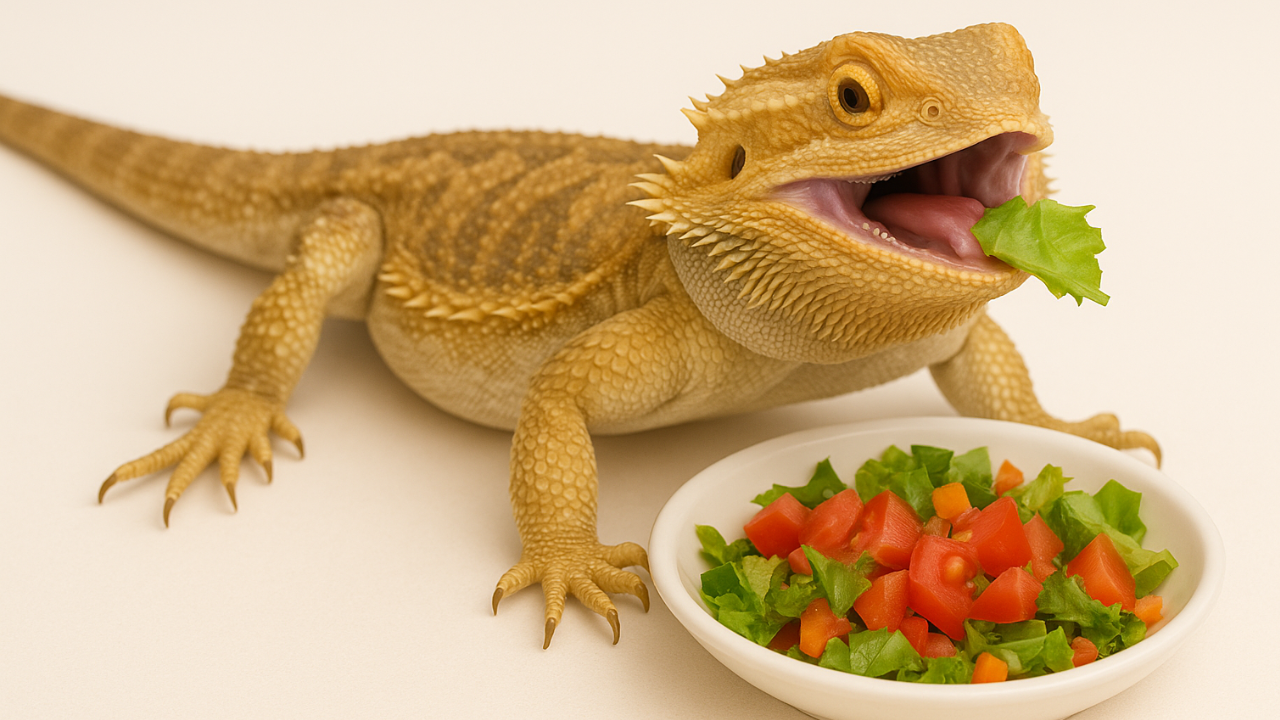
A healthy bearded dragon should have a good weight, neither too thin nor too overweight.
If your beardie is too thin, they may require a diet higher in insects. If they are overweight, then reduce the amount of fruits or high-fat insects like waxworms. This will help you to avoid overfeeding your bearded dragon.
Additional Tips
- Do not overfeed adult bearded dragons to prevent obesity.
- Offer insects for about 10-15 minutes per feeding session.
- Remove uneaten food to prevent spoilage.
- Use calcium supplementation 2-3 times weekly for insects.
Conclusion
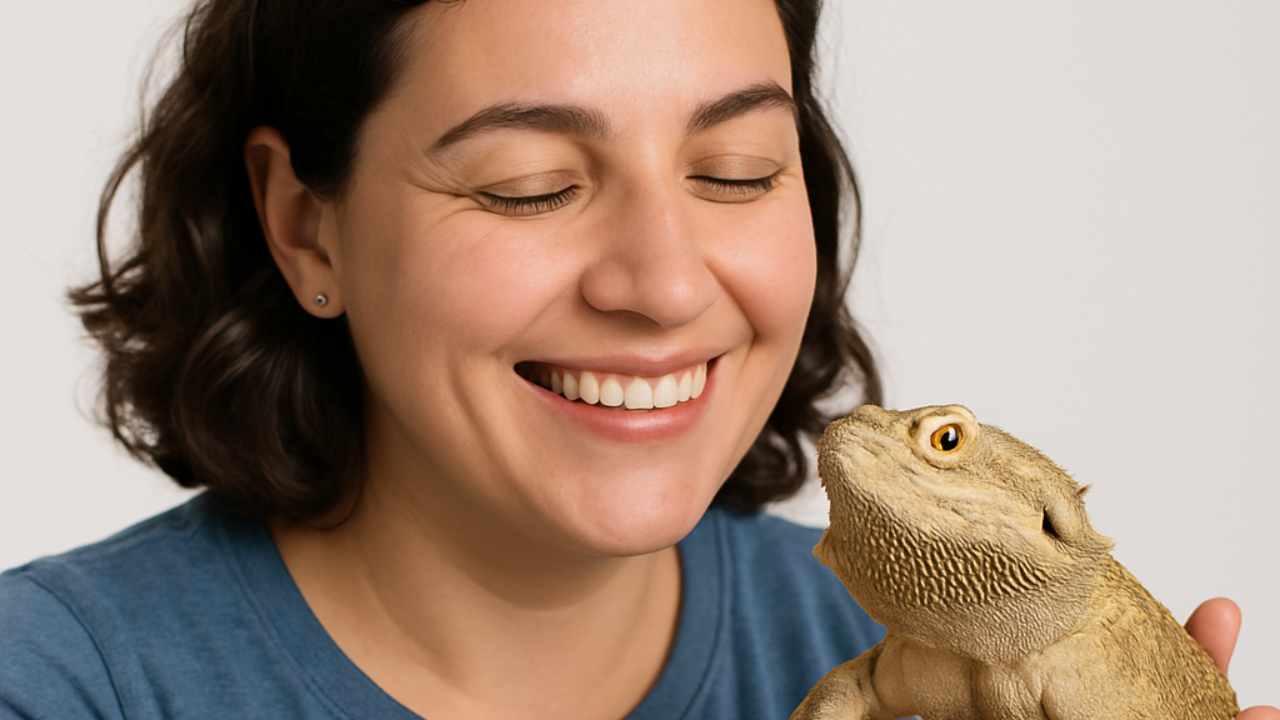
Now you are ready to help your bearded dragon live a long and healthy life by understanding your pet’s dietary needs and adjusting their food intake based on age. Therefore, monitor their health, adjust their diet as necessary, and consult a veterinarian for any specific dietary concerns.

